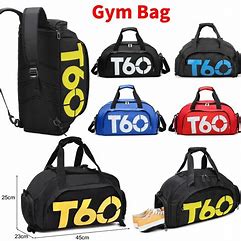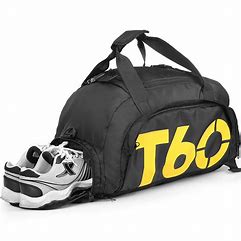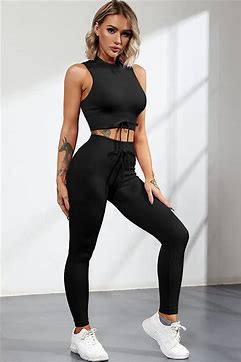Types of Resistance Bands: There are various types of resistance bands available, including loop bands, tube bands with handles, and flat bands. Each type has its own advantages and can be used for different exercises.
Exercises You Can Do:
Strength Training: Resistance bands can be used for exercises like squats, lunges, bicep curls, and shoulder presses to build muscle and strength.
Stretching: They are great for improving flexibility and can be used for stretching exercises.
Pilates and Yoga: Resistance bands can enhance your Pilates and yoga workouts by adding resistance to various movements and poses.
Cardio: You can incorporate resistance bands into your cardio workouts to increase intensity and calorie burn.
Adjustable Resistance: Many resistance band sets come with multiple bands of varying resistance levels. This allows you to start with lighter resistance and gradually increase it as you get stronger.
Safety Tips:
Always ensure that the bands are securely anchored to a stable surface or object.
Start with low resistance and proper form to avoid injury.
Keep the bands in good condition, checking for any wear or tears before each use.
Full-Body Workouts: With a set of resistance bands, you can create a full-body workout routine that targets different muscle groups. For example:
Upper Body: Chest presses, rows, tricep extensions.
Lower Body: Squats, leg lifts, hamstring curls.
Core: Russian twists, plank leg lifts.
Online Resources: There are numerous online videos and tutorials that can guide you through various resistance band workouts and exercises. Many fitness apps also offer workout routines incorporating resistance bands.
Combining with Other Equipment: You can also combine resistance bands with other home gym equipment like stability balls, yoga mats, or dumbbells for a well-rounded workout.
Warm-Up and Cool Down: Always begin your workouts with a proper warm-up to prepare your muscles and joints for exercise. Likewise, finish with a cool-down routine to help prevent muscle soreness and improve flexibility.
Progressive Overload: To see continuous progress, gradually increase the resistance or the number of repetitions and sets in your workouts. This helps your muscles adapt and grow stronger over time.
Variation in Grip and Stance: Experiment with different grips and stances to target specific muscle groups. For instance, a wider grip might emphasize your chest during a resistance band chest press, while a narrower grip might focus more on your triceps.
Isometric Holds: Resistance bands are excellent for isometric exercises where you hold a position against resistance. For example, you can perform a wall sit while holding the resistance band around your thighs to engage your leg muscles.
Stretching and Mobility: Resistance bands can aid in improving your flexibility and mobility. Use them for stretching exercises, like hamstring stretches, hip flexor stretches, and shoulder mobility exercises.
Core Work: Enhance your core workouts with resistance bands. Exercises such as standing anti-rotation twists or woodchoppers engage your core and oblique muscles effectively.
Partner Workouts: If you have a workout buddy or family member at home, resistance bands can be used for partner exercises. For example, you can hold the ends of a band while your partner performs rows, creating resistance.
Travel-Friendly: Resistance bands are lightweight and portable, making them great for on-the-go workouts. You can easily pack them when traveling to maintain your fitness routine.
Rehabilitation: Resistance bands are often used in physical therapy and rehabilitation exercises to aid in recovery from injuries. Consult a healthcare professional for guidance if you’re using them for rehabilitation purposes.
Consistency: Like any workout routine, consistency is key to seeing results. Aim for regular workouts and make them a part of your daily or weekly routine.
Safety and Maintenance: Regularly check your resistance bands for any signs of wear and tear, such as fraying or weakening. Replace them if they show any signs of damage to avoid potential accidents.
Nutrition and Hydration: Remember that exercise is just one part of a healthy lifestyle. Pay attention to your nutrition and hydration to support your fitness goals.
Listen to Your Body: If you experience pain or discomfort during an exercise, stop immediately and reassess your form. It’s important to prioritize safety and avoid overexertion.
Types of Resistance Bands:
Loop Bands: These are small, circular bands that can be used for a variety of lower body exercises, like squats and leg lifts. They’re also excellent for stretching.
Tube Bands with Handles: Tube bands typically come with handles and can be attached to a door anchor or used as standalone equipment. They’re versatile for both upper and lower body workouts.
Flat Bands: These are long, flat bands that can be used for various exercises, including stretching, upper body, and lower body workouts. They’re especially useful for adding resistance to bodyweight exercises.
2. Resistance Levels:
Resistance bands often come in different colors or with labels indicating their resistance levels (e.g., light, medium, heavy). It’s essential to choose the right resistance level for each exercise. Start with a lighter resistance band if you’re a beginner and gradually progress to heavier ones as you become more experienced.
3. Full-Body Workouts:
For a comprehensive workout, try to target all major muscle groups: upper body, lower body, and core. Design your workouts to include exercises for each area.
4. Example Exercises:
Upper Body:
Bicep Curls: Stand on the resistance band with your feet hip-width apart and curl the band up toward your shoulders.
Lat Pulldowns: Attach the band to an anchor point above you and pull the handles down to your chest.
Lower Body:
Squats: Place the band under your feet, hold the handles, and squat down while maintaining tension on the band.
Leg Press: Loop the band around your feet and press your legs outward against the resistance.
Core:
Plank with Band Row: Attach the band to a sturdy anchor point and perform rows while holding a plank position.
Russian Twists: Sit on the floor, loop the band around your feet, and perform twisting motions while holding the handles.
5. Sets and Repetitions:
Like any workout, you should plan your sets and repetitions (reps) based on your fitness goals. For muscle endurance, aim for higher reps (e.g., 3 sets of 15-20 reps), and for muscle strength, go for lower reps with higher resistance (e.g., 3 sets of 8-10 reps).
6. Safety Precautions:
Ensure that the resistance bands are secure and not damaged before each use.
Maintain proper form to prevent injuries.
Start with proper warm-up exercises to prepare your muscles.
Incorporate a cool-down routine and stretching to aid in recovery.
7. Tracking Progress:
Keep a workout journal to record your exercises, sets, reps, and resistance levels. This helps you track your progress and make adjustments to your workouts over time.
Resistance Bands: These sets usually come with a variety of resistance bands of different colors or levels. Resistance bands offer resistance during exercises, making them an excellent tool for strengthening muscles and improving flexibility.
Attachments: Some sets may include attachments like handles or ankle straps that can be attached to the resistance bands for added versatility. These attachments allow you to perform a wider range of exercises.
Here’s how you can use a workout bar fitness resistance bands set for Pilates and yoga:
1. Pilates:
Leg and Glute Exercises: Attach the resistance bands to your workout bar and secure them around your ankles. You can perform exercises like leg lifts, leg circles, and glute bridges to target your lower body muscles.
Upper Body Exercises: Use the bar to perform Pilates-inspired upper body exercises like chest presses, shoulder presses, and bicep curls.
Core Strengthening: Incorporate resistance bands into your Pilates routine for core-strengthening exercises like seated twists, roll-ups, and side planks.
2. Yoga:
Stretching and Flexibility: Resistance bands can be used for deepening your stretches and improving flexibility. For example, you can use them during seated forward bends to reach farther or during hip openers to gently pull your legs apart.
Balance and Stability: The workout bar can assist with balance and stability during standing yoga poses. Hold onto the bar during poses like tree pose or warrior II for added support.
Strength Building: Incorporate resistance bands into your yoga practice for strength-building exercises like bicep curls, tricep extensions, and squats.













Reviews
There are no reviews yet.